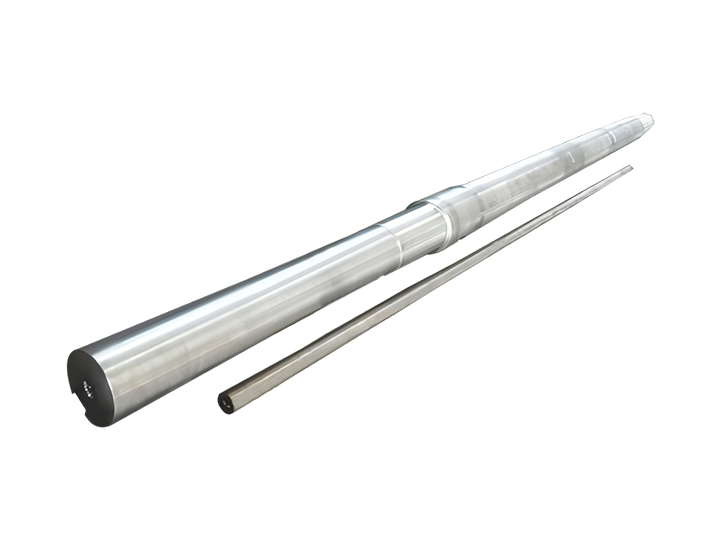Comprehensive Analysis Of Stainless Steel Shafts: A Guide To Properties, Applications, And Manufacturing Processes
Release time:2025-12-01
Visits:0
As a core transmission component in the industrial sector, stainless steel shafts occupy a crucial position in mechanical manufacturing due to their unique material advantages. In recent years, demand for stainless steel shafts in China's industrial market has grown steadily, with products made from 304, 316, and other series accounting for over 65% of the market share. Particularly in the chemical and food processing industries, they have achieved an 8.3% annual compound growth rate, demonstrating strong application potential.
Core Property Analysis
1. Exceptional Corrosion Resistance
In marine environments (salt spray corrosion) and chemical acid-alkaline media, the passive film formed on the surface of stainless steel shafts effectively blocks chemical erosion, with salt spray testing showing no rust for up to 48 hours.
2. Diversified Strength Adaptation Solutions
Through heat treatment technologies such as quenching and nitriding, the shaft hardness can be increased to HRC58±2, meeting strength grading requirements from medical devices to heavy-duty equipment.
3. High-Temperature Operational Stability
Special stainless steel materials maintain a yield strength >300MPa even at 400°C, suitable for high-load scenarios such as aerospace engines.
4. Hygienic Safety Design
Mirror polishing processes with surface roughness Ra≤0.8μm comply with FDA food-grade contact standards, making them core components of dairy filling equipment.
Industry Application Spectrum
- Heavy Industry: Stirring shafts for petrochemical reactor kettles are manufactured using duplex stainless steel to withstand hydrogen sulfide corrosion environments.
- Precision Medical Equipment: Drive shafts for implantable medical devices are ISO13485 certified to ensure biocompatibility.
- Smart Home Appliances: Rotating shafts in dishwashers utilize 304L ultra-low carbon materials to eliminate intergranular corrosion risks.
- New Energy Transportation: Drive shafts for electric vehicles adopt lightweight hollow designs, reducing weight by 22%.
- Special Equipment: Marine platform lifting systems are equipped with 316L material shafting, achieving a 50-year corrosion-resistant design life.
Advanced Manufacturing Technology Analysis
1. Material Science Breakthroughs
New surface composite technologies apply tungsten carbide coatings via laser cladding, tripling wear resistance. A patented technology (CN2022) achieves a shaft scratch resistance rating of 9H pencil hardness.
2. Precision Forming Processes
Multi-station cold heading achieves error control within ±0.02mm, and when combined with CNC grinding, key fitting sections maintain roundness errors ≤0.005mm.
3. Intelligent Quality Monitoring
Eddy current flaw detectors are integrated for online inspection, identifying internal defects as small as 0.2mm and reducing scrap rates to 0.3‰.
Usage and Maintenance Guidelines
- Thermal Expansion Management: Materials with a linear expansion coefficient of 11.5×10⁻⁶/°C require an axial clearance of 0.1mm/m.
- Welding Process Selection: TIG welding is recommended, with argon purity ≥99.996%.
- Electrochemical Corrosion Prevention: Avoid direct contact with carbon steel components; insulation bushings are recommended.
- Lubrication Optimization: For high-temperature conditions, use fully synthetic fluorine grease with a dropping point >280°C.
As the "power joints" of modern industrial equipment,
stainless steel shafts are evolving toward functional complexity and green manufacturing. Third-party testing data shows that process-optimized stainless steel shaft components can extend equipment maintenance cycles by 40%, playing a key role in intelligent manufacturing upgrades. With breakthroughs in surface modification technologies and declining material costs, the penetration rate of these products in new energy vehicle three-electric systems is expected to exceed 35% within five years, creating new market growth drivers.
